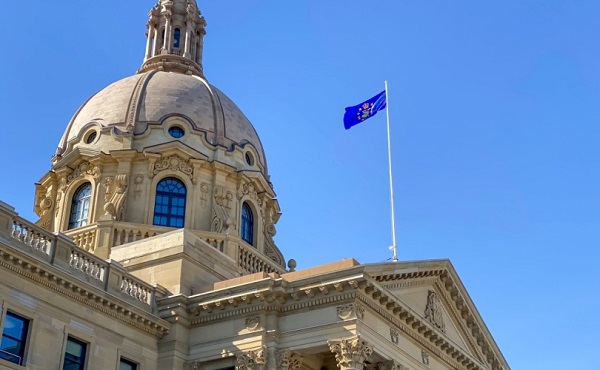Business
INDIGENOUS CONSULTATION AND ENGAGEMENT AT CANADA’S ENERGY AND UTILITY REGULATORS

INDIGENOUS CONSULTATION AND ENGAGEMENT AT CANADA’S ENERGY AND UTILITY REGULATORS
CAMPUT is the Association of Canada’s provincial, territorial and federal energy and utility regulators. CAMPUT’s purpose is to improve energy and utility regulations in Canada and to educate and train our members. We are highlighting the work of two of our members, the Canadian Nuclear Safety Commission and the Canada Energy Regulator, in the areas of Indigenous consultation and engagement.
The Canadian Nuclear Safety Commission (CNSC) has a broad mandate, including to protect health, safety and security, and the environment, and to disseminate objective scientific, technical and regulatory information to the public, including Indigenous groups. The CNSC is also an agent of the Crown with the responsibility of ensuring the Duty to Consult is met before making decisions. The CNSC has explored various means to ensure that Indigenous groups’ voices are heard and integrated into Commission decision-making. The CNSC has also committed to developing on-going, respectful relationships that allow open dialogue in the spirit of reconciliation and trust building.
First, the CNSC focused in-house and put into place policies, practices and processes with an overarching regulatory framework and management system to confirm that CNSC decisions uphold the Honor of the Crown. This included a Regulatory Document (REGDOC 3.2.2, 2016) that sets out the Commission expectations on how proponents play a significant role in working with Indigenous groups to address concerns and mitigate impacts and / or treaty rights, early in design and project proposal stages.
The CNSC also has a dedicated team with expertise in Indigenous consultation and engagement that conducts ongoing engagement with Indigenous groups with interests in nuclear facilities. The long-term goal is to help build relationships and trust and help CNSC staff learn more about the history, rights, interests, and culture of the Indigenous groups. The CNSC continues to work with Indigenous groups to ensure they are provided the opportunity to present their views and give oral presentations at Commission hearings.
To support this participation, the CNSC has put in place a Participant Funding Program that in part, has helped Indigenous groups hire consultants to review technical scientific reports, fund Indigenous Knowledge studies, cover community meeting costs, pay Honoraria for elders, and costs for travel and preparations for hearings. Further, Commission hearings have taken place in communities near facilities to allow easier access by Indigenous groups, and teleconferencing, web access, live streaming and simultaneous translation in Indigenous languages has also been used.
The CNSC acknowledges the importance of working with and integrating Indigenous Knowledge alongside scientific and regulatory information in its assessments and regulatory processes, where appropriate and where authorized by Indigenous communities. Indigenous ways of knowing and cultural context enhance the CNSC’s understanding of potential impacts of projects and strengthens project reviews and regulatory oversight.
The CNSC also runs its own Independent Environmental Monitoring Program (IEMP) that seeks Indigenous participation in taking samples from public areas around nuclear facilities and measuring and analyzing the amount of radiological and hazardous substances in the samples. Following discussions with many Indigenous groups, it was recognized that they could play a key role in identifying country foods and traditional harvest areas and participate as part of the IEMP. Getting meaningful monitoring results to Indigenous communities is a key priority for the CNSC.
The Canada Energy Regulator (CER) welcomes change. In August 2019 we transitioned from the National Energy Board to the Canada Energy Regulator. The CER has been given new legislation and is focused on improvement. Reconciliation with Indigenous Peoples is a pillar of our renewal.
Our legislation directs us to find meaningful ways to engage with Indigenous Peoples. We embrace our new mandate and have woven specific deliverables on reconciliation into every aspect of our work.
Our vision: to transform the way we work with Indigenous Peoples, recognizing their unique cultures, knowledge and histories; and endeavor to reflect a renewed Nation- to-Nation relationship based on the recognition of rights, respect, cooperation and partnership.
We recognize reconciliation is an ongoing process that occurs in the context of evolving Indigenous-Crown relationships. Sitting around the table with Indigenous communities, we are working to find new ways to co-manage regulatory oversight. We recognize the inseparable connection Indigenous Peoples have with the land and the water, and we will work collaboratively to protect them. We are also ensuring we equip the communities with the right skills and support to make the changes we envision a reality.
Indigenous Advisory and Monitoring Committees (IAMC) bring together Indigenous and federal leaders to provide advice to regulators and to monitor the Trans Mountain Expansion and Line pipelines. Members share the goals of safety and protection of environmental and Indigenous interests in the lands and water. Indigenous participation does not equal support or opposition for a project, allowing for better information-sharing within the group. This initiative represents a foundational change in the way the CER and the Federal government work with Indigenous Peoples. It aims to develop an enduring and meaningful relationship for the entire lifecycle of the project. We believe our work with the IAMCs can lead the way on co- management of regulatory oversight activities and has the potential to be applied across the rest of Canada’s energy system.
Here are some other ways we are changing how we work with Indigenous Peoples:
- We are meeting with Indigenous communities earlier on who may be impacted by projects we regulate to better understand their concerns and share how the CER holds companies accountable for the protection of Indigenous rights and interests.
- We are adapting our hearing processes to allow for different paths of Indigenous participation. This includes sharing Indigenous Knowledge, allowing for ceremonies, selecting specific locations for the hearing that are convenient to Indigenous participants or elders, and allowing for remote participation if travel is not possible.
- We are developing a National Indigenous Monitoring Policy so that all CER-regulated infrastructure projects can benefit from Indigenous Knowledge when they are being build and operated.
- We are training our employees to understand more about Indigenous history, culture and contemporary issues facing Indigenous Peoples in Canada. This training ensures that consideration of Indigenous rights and interests and becomes embedded in our way of working.
Background. The Canadian Energy Compendium is an annual Energy Council of Canada initiative which provides opportunity for cross-sectoral collaboration on a topic of shared interest across the Canadian energy sector, produced with the support of Canada’s national energy associations and Energy Council of Canada’s members. The stories contributed to the 2019 edition, Indigenous Energy Across Canada, highlight current conversations celebrating Canada’s dynamic energy sector and encouraging its continuous improvement.

Thanks to Todayville for helping us bring our members’ stories of collaboration and innovation to the public.
Click to read a foreward from JP Gladu, Chief Development and Relations Officer, Steel River Group; Former President and CEO, Canadian Council for Aboriginal Business.

JP Gladu, Chief Development and Relations Officer, Steel
River Group; Former President & CEO, Canadian Council for Aboriginal Business

Jacob Irving, President of Energy Council of Canada
The Canadian Energy Compendium is an annual initiative by the Energy Council of Canada to provide an opportunity for cross-sectoral collaboration and discussion on current topics in Canada’s energy sector. The 2020 Canadian Energy Compendium: Innovations in Energy Efficiency is due to be released November 2020.
Click to read comments about this series from Jacob Irving, President of the Energy Council of Canada.
Hydro-Québec takes partnerships, environmental measures and sharing of wealth to new levels
Alberta
COWBOY UP! Pierre Poilievre Promises to Fight for Oil and Gas, a Stronger Military and the Interests of Western Canada

Fr0m Energy Now
As Calgarians take a break from the incessant news of tariff threat deadlines and global economic challenges to celebrate the annual Stampede, Conservative party leader Pierre Poilievre gave them even more to celebrate.
Poilievre returned to Calgary, his hometown, to outline his plan to amplify the legitimate demands of Western Canada and not only fight for oil and gas, but also fight for the interests of farmers, for low taxes, for decentralization, a stronger military and a smaller federal government.
Speaking at the annual Conservative party BBQ at Heritage Park in Calgary (a place Poilievre often visited on school trips growing up), he was reminded of the challenges his family experienced during the years when Trudeau senior was Prime Minister and the disastrous effect of his economic policies.
“I was born in ’79,” Poilievre said. “and only a few years later, Pierre Elliott Trudeau would attack our province with the National Energy Program. There are still a few that remember it. At the same time, he hammered the entire country with money printing deficits that gave us the worst inflation and interest rates in our history. Our family actually lost our home, and we had to scrimp and save and get help from extended family in order to get our little place in Shaughnessy, which my mother still lives in.”
This very personal story resonated with many in the crowd who are now experiencing an affordability crisis that leaves families struggling and young adults unable to afford their first house or condo. Poilievre said that the experience was a powerful motivator for his entry into politics. He wasted no time in proposing a solution – build alliances with other provinces with mutual interests, and he emphasized the importance of advocating for provincial needs.
“Let’s build an alliance with British Columbians who want to ship liquefied natural gas out of the Pacific Coast to Asia, and with Saskatchewanians, Newfoundlanders and Labradorians who want to develop their oil and gas and aren’t interested in having anyone in Ottawa cap how much they can produce. Let’s build alliances with Manitobans who want to ship oil in the port of Churchill… with Quebec and other provinces that want to decentralize our country and get Ottawa out of our business so that provinces and people can make their own decisions.”
Poilievre heavily criticized the federal government’s spending and policies of the last decade, including the increase in government costs, and he highlighted the negative impact of those policies on economic stability and warned of the dangers of high inflation and debt. He advocated strongly for a free-market economy, advocating for less government intervention, where businesses compete to impress customers rather than impress politicians. He also addressed the decade-long practice of blocking and then subsidizing certain industries. Poilievre referred to a famous quote from Ronald Reagan as the modus operandi of the current federal regime.
“The Government’s view of the economy could be summed up in a few short phrases. If anything moves, tax it. If it keeps moving, regulate it. And if it stops moving, subsidize it.”
The practice of blocking and then subsidizing is merely a ploy to grab power, according to Poilievre, making industry far too reliant on government control.
“By blocking you from doing something and then making you ask the government to help you do it, it makes you reliant. It puts them at the center of all power, and that is their mission…a full government takeover of our economy. There’s a core difference between an economy controlled by the government and one controlled by the free market. Businesses have to clamour to please politicians and bureaucrats. In a free market (which we favour), businesses clamour to impress customers. The idea is to put people in charge of their economic lives by letting them have free exchange of work for wages, product for payment and investment for interest.”
Poilievre also said he plans to oppose any ban on gas-powered vehicles, saying, “You should be in the driver’s seat and have the freedom to decide.” This is in reference to the Trudeau-era plan to ban the sale of gas-powered cars by 2035, which the Carney government has said they have no intention to change, even though automakers are indicating that the targets cannot be met. He also intends to oppose the Industrial Carbon tax, Bill C-69 the Impact Assessment Act, Bill C-48 the Oil tanker ban, the proposed emissions cap which will cap energy production, as well as the single-use plastics ban and Bill C-11, also known as the Online Streaming Act and the proposed “Online Harms Act,” also known as Bill C-63. Poilievre closed with rallying thoughts that had a distinctive Western flavour.
“Fighting for these values is never easy. Change, as we’ve seen, is not easy. Nothing worth doing is easy… Making Alberta was hard. Making Canada, the country we love, was even harder. But we don’t back down, and we don’t run away. When things get hard, we dust ourselves off, we get back in the saddle, and we gallop forward to the fight.”
Cowboy up, Mr. Poilievre.
Maureen McCall is an energy professional who writes on issues affecting the energy industry.
Business
Carney’s new agenda faces old Canadian problems

From the Fraser Institute
In his June speech announcing a major buildup of Canada’s military, Prime Minister Mark Carney repeated his belief that this country faces a “hinge moment” of the sort the allied countries confronted after the Second World War.
A better comparison might be with the beginning of the war itself.
Then, the Allies found themselves at war with an autocratic state bent on their defeat and possible destruction. Now, Carney faces an antagonistic American president bent on annexing Canada through economic warfare.
Then, Canada rose to the challenge, creating the world’s third-largest navy and landing an army at Normandy on D-Day. Now, Carney has announced the most aggressive reorienting of Canada’s economic, foreign and defence policies in generations.
Polls show strong support among Canadians for this new agenda. But the old Canada is still there. It will fight back. It may yet win.
The situation certainly would have been more encouraging had Carney not inherited Justin Trudeau’s legacy of severe economic and environmental restrictions—picking economic winners and losers rather than letting the market decide—and chronic deficits. The new prime minister would do well to dismantle as much of that legacy as he can.
Some advocate a return to the more laissez-faire approach of Stephen Harper’s government. But Harper didn’t confront a belligerent president hoping to annex Canada through the “economic force” of tariff walls.
The prime minister succeeded in getting Bill C-5, which is intended to weaken at least some of the restrictions on resource development and infrastructure, passed into law. He and the premiers pledge to finally dismantle generations of internal trade and labour mobility barriers. If we must trade less with the Americans, we can at least learn to trade with ourselves.
And the prime minister deserves high praise for reversing decades of military decline through increased spending and efforts to improve procurement. If Carney accomplishes nothing more than restoring Canada’s defences, especially in the Arctic, he will be well remembered.
That said, major challenges confront the Carney agenda.
There’s much talk about a new national energy corridor. But what does that mean? One KPMG executive defined it as a “dedicated, streamlined pathway for the energy, electricity, decarbonization, transportation and digital infrastructure.”
Yes, but what does that mean?
Whatever it means, some First Nations will oppose it tooth-and-nail. Not all of them, mind you. The First Nations Major Project Coalition is dedicated to assisting First Nations in working with government and the private sector for the benefit of all. But many First Nations people consider resource development further exploitation of their ancestral lands by a colonizing power. At the first major proposal to which they do not buy in, they will take the government to court.
What investor will be willing to commit to a project that could be blocked for years as First Nations and Ottawa fight it out all the way to the Supreme Court?
The prime minister, formerly a fervent advocate of combatting climate change, now talks about developing “conventional energy,” which means oil and gas pipelines. But environmental activists will fiercely oppose those pipelines.
There is so much that could go wrong. Sweep away those internal trade barriers? Some premiers will resist. Accelerate housing development? Some mayors will resist. Expand exports to Europe and Asia? Some businesses and entrepreneurs will say it’s not worth the risk.
As for the massive increase in defence spending, where will the money come from? What will be next year’s deficit? What will be the deficit’s impact on inflation, interest rates and sovereign creditworthiness? The obstacles are high enough to make anyone wonder how much, if any, of the government’s platform will be realized. But other factors are at work as well, factors that were also present in 1939.
To execute his mandate, Carney is surrounding himself with what, back in the Second World War, were called “dollar a year men”—executives who came to Ottawa from the private sector to mobilize the economy for wartime.
In Carney’s case he has brought in Marc-André Blanchard as chief of staff and Michael Sabia as clerk of the privy council. Both are highly experienced in government and the private sector. Both are taking very large pay cuts because, presumably, they understand the gravity of the times and believe in the prime minister’s plans.
Most important, Carney’s agenda has broad support from a public that fears for the country’s future and will have little patience toward any group seeking to block the prime minister’s agenda.
Millions of Canadians want this government’s reform efforts to succeed. Those who would put it at risk of failing will have to contend with public anger. That gives Carney a shot at making real change.
-
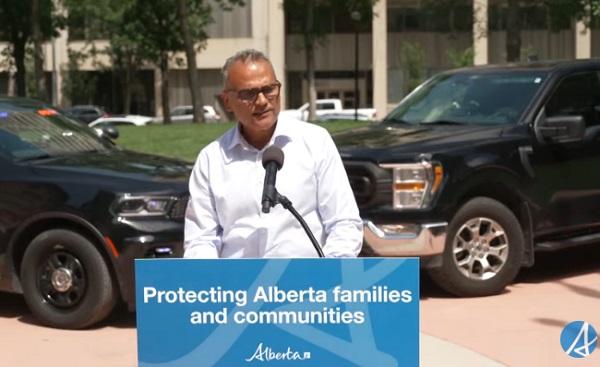
 Alberta2 days ago
Alberta2 days agoAlberta Provincial Police – New chief of Independent Agency Police Service
-
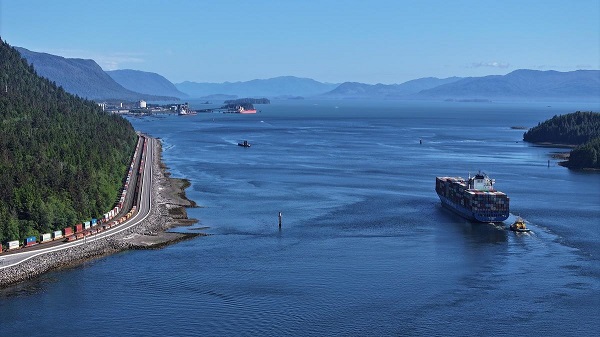
 Business2 days ago
Business2 days agoWhy it’s time to repeal the oil tanker ban on B.C.’s north coast
-

 International2 days ago
International2 days agoCBS settles with Trump over doctored 60 Minutes Harris interview
-
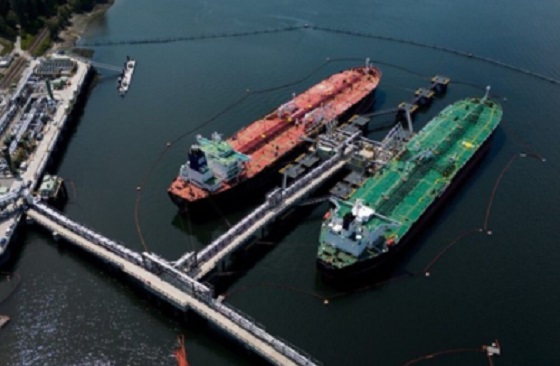
 Energy2 days ago
Energy2 days agoIf Canada Wants to be the World’s Energy Partner, We Need to Act Like It
-

 Alberta2 days ago
Alberta2 days agoPierre Poilievre – Per Capita, Hardisty, Alberta Is the Most Important Little Town In Canada
-

 Aristotle Foundation2 days ago
Aristotle Foundation2 days agoHow Vimy Ridge Shaped Canada
-

 Alberta1 day ago
Alberta1 day agoAlberta uncorks new rules for liquor and cannabis
-
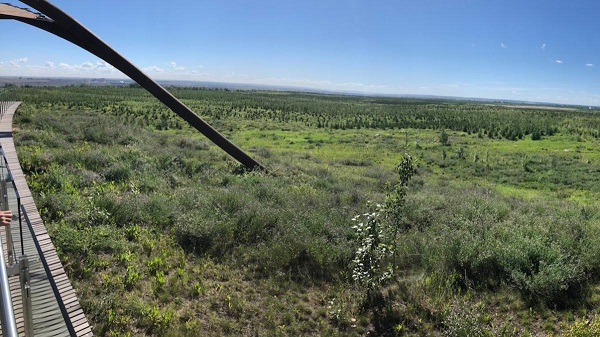
 Canadian Energy Centre1 day ago
Canadian Energy Centre1 day agoAlberta oil sands legacy tailings down 40 per cent since 2015



